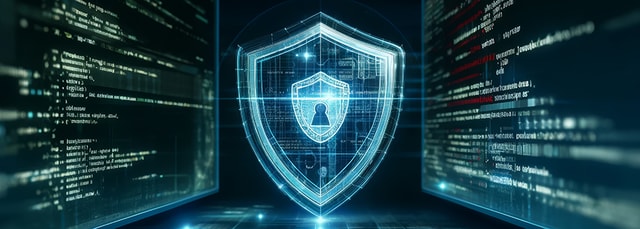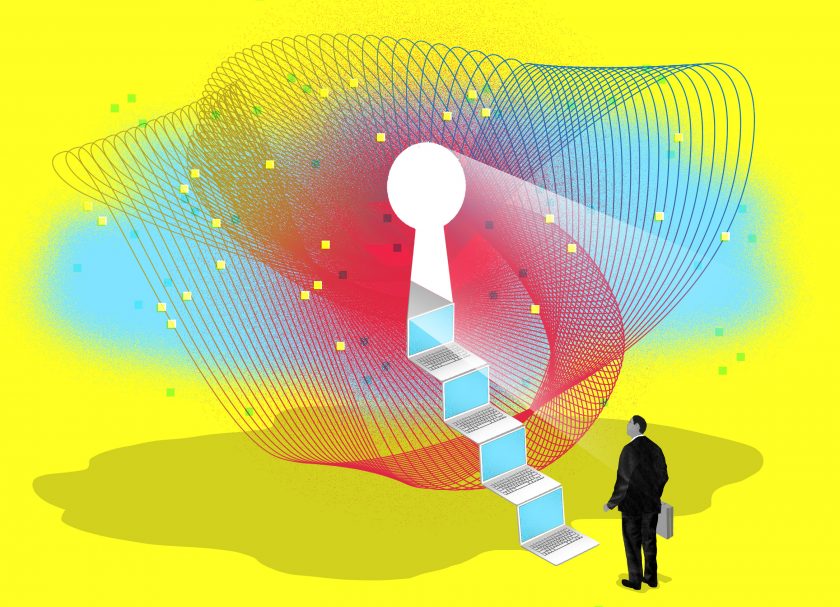It seems inevitable that the worlds of cybersecurity and artificial intelligence (AI) should intersect, collide, and transform each other. Each is rapidly changing due to a combination of significant technical advances and the revolution in how, when, where, and why technology is used—for both better and worse.
This isn’t just a matter of tracking the amount of financial and human resources that go into both cybersecurity and AI—although those trends are undeniable and top of mind for technical leaders, business executives, line-of-business stakeholders, and board members. The convergence of cybersecurity and AI has changed the rules of the game when it comes to both how organizations leverage this trend for more robust and flexible cybersecurity defenses and how attackers take advantage of the same trend to make their attacks more frequent and potentially more successful.
Take generative AI (GenAI), for instance. GenAI leaped to the front of the pack of AI iterations reshaping the role and impact of the technology, including machine learning, predictive AI, causal AI, and deep learning.
Industry analyst firm Enterprise Strategy Group recently issued a report on how generative AI impacts organizations’ cybersecurity efforts. This report points out that 76% of organizations feel cyberattackers will gain the biggest advantage from generative AI, compared with just 24% who believe security defenders will have the upper hand.1 Still, despite organizations’ concerns about hackers initially gaining an edge with the technology, the ESG analysts wrote: “Generative AI could help improve security team productivity, accelerate threat detection, automate remediation actions, and guide incident response.”2
Cybersecurity Pressure Mounts: New Solutions and Mindsets Are Essential
You don’t need to be a chief information security officer to understand that cybersecurity is more challenging than ever, even without the impact of AI. There are two major reasons why: First, the massive influx of new threats presses organizations to detect, respond to, and remediate attacks faster and more completely. Second, managing an ever-expanding portfolio of tools, services, and solutions continues to be more complex, which can lead to mistakes and security coverage gaps.
The cybersecurity tools sprawl also brings other real-world challenges. Each tool has a different console, data logging convention, and context. This can make it significantly more difficult for security teams to fill in those coverage gaps while minimizing errors. Worst of all, it means security teams may spend a lot of time integrating versus doing actual security.
For years, the typical answer for this growing array of threats and challenges has been new tools—lots of them. But having dozens and dozens of best-of-breed tools and services to pick through when determining how to prevent and respond to attacks takes time, money, and skills. Since those resources are in short supply and getting tighter, organizations are pressed to find a new way to overcome this complexity and reduce risk, especially in an era when artificial intelligence is a powerful weapon being leveraged by attackers.
More and more often, organizations opt for a platformization approach to managing the cybersecurity puzzle to reduce complexity, identify and mitigate risk, and ensure a more digitally secure environment. In fact, Gartner cited “consolidation” as a key CISO trend in 2023.3
Introducing Platformization
Platformization combines numerous products and services into a unified architecture with a single datastore, streamlined management and operations, and native integrations to reduce the time required to have different products speak to each other.
In order for platformization to meet its expectations, several critical requirements must be fulfilled. First, every product or service consolidated into the platform must be as good or better than the corresponding point products available in that space. Adopting a platform should never mean sacrificing security efficacy for simplified management or vendor consolidation.
Next, the platform must be modular, allowing your organization to grow into the use of the platform over time. Wholesale replacements of many different security products at the same time can be more complicated than most organizations would want to take on. Adding the challenge of different replacement cycles of incumbent offerings makes it even more difficult. A platform must be adoptable in whole or in parts, without losing its ability to meet the complete need of the use cases being considered.
Finally, the platform must also enable native platform integrations that make each component even stronger than it would be on its own. All too often, vendors develop platforms as “ships in the night,” building a single user interface but with each product operating entirely independently beneath that UI. Everything from policy management to reporting must be consolidated and tightly integrated. As an example, if you’re evaluating a platform for network security and that platform offers numerous services to protect against different types of advanced threats, visibility into where and how you’re stopping each threat should be consolidated and reported centrally. It should not be in separate reports that pull from entirely separate datastores.
Why Is Platformization So Important?
Most importantly, an integrated, consolidated, coordinated platform can help bring better security. Pulling together multiple solutions into a single platform can all but eliminate the security coverage gaps that naturally occur when multiple individual point products are deployed to solve narrow, specific problems. This is especially important as cyberattacks leverage multiple vulnerabilities simultaneously, thanks to attackers’ opportunistic use of AI.
But there’s more. By consolidating a number of related products, services, and tools into a single platform designed within a common architecture, with single-pane-of-glass orchestration, organizations can:
- Unify data to uncover the source and impact of emerging threats and zero-days.
- Achieve seamless consistency and traceability, helping ensure consistency at every point and integration across the lifecycle.
- Dramatically ease the management of cybersecurity solutions.
- Improve visibility across threat vectors, geographies, and technology platforms.
- Reduce cybersecurity risk by helping to detect and block attacks much faster and more reliably.
- Reduce procurement costs, such as purchasing, licensing, integrating, and maintaining a multitude of solutions.
- Stop double-paying for overlapping functionality among different product sets.
- Trim the training and education burden for cybersecurity and IT professionals since the consolidated solutions under a platform are designed to “collaborate.”
Platforms also are an efficient way to use the power and utility of AI/ML not only to remediate the impact of attacks but also to spot and block attacks before they hit. AI-powered platforms provide SecOps teams dramatically improved visibility and enhanced intelligence to deliver the proper response to the growing range of attacks. AI also drives platforms’ value by surfacing high-fidelity data to inform decisions made by and for tools consolidated within the platform. The result is better security outcomes, especially when APIs and plugins enable the platform to ingest data from trusted third-party sources.
Why Cybersecurity Platformization Matters More than Ever in an AI-Centric Environment, Thanks to Precision AI by Palo Alto Networks
The development of cybersecurity platforms in an AI-centric era was hardly an act of luck and serendipity. Palo Alto Networks engineers and security professionals anticipated the growing significance and impact of AI as a force multiplier for more effective cybersecurity. They also understand the technology’s potential to be leveraged by hackers for faster, easier, and wider-impact threats.
Platforms are critical to taking advantage of all AI has to offer (in cybersecurity and in other use cases) for several reasons. For example, they can:
- Identify and prevent AI-specific threats, such as malicious use of AI-generated code for identity theft or inappropriate access controls.
- Prevent corrupt code from being generated and integrated into application development lifecycles or in the creation of organization-specific large language models.
- Spot and block attempts to plant malicious AI-generated code during the deployment of production systems.
- Provide more comprehensive and efficient data protection and privacy.
By making cybersecurity frameworks and architectures simpler to design and deploy, platforms promote improved cybersecurity posture and offset the growing problem area of the cybersecurity skills gap with widespread automation and improved orchestration.
Another vital part of the growing role of platformization in an AI-centric era is Precision AI™ by Palo Alto Networks. One of the key elements of platformization is the ability to have a unified dataset pulled from a myriad of sources to create a richer telemetry of cybersecurity-specific data. At the heart of this focus on unified data is Precision AI, the Palo Alto Networks proprietary AI system. Precision AI incorporates best-of-breed AI capabilities, including machine learning, deep learning, and GenAI to create security-specific data models that automate detection, prevention, and remediation.
Powered by Precision AI, Palo Alto Networks products are a great fit for cybersecurity platformization because they leverage the security dataset created, curated, and organized at the platform level. Our platform is an apt set of solutions for many organizations because the products powered by Precision AI are engineered to work in hybrid environments, collecting and leveraging relevant data from on-premises, edge, and multicloud settings.
This allows the cybersecurity platform to capture and contextualize security-related data to identify and prevent attacks in real time. Precision AI helps to drive trust and confidence in platform-driven recommendations by using the right information, in the right context, in the right manner, helping to obviate the impact of alert fatigue, false positives, and human error that contribute to cybersecurity problems.
Platformization is an essential part of optimizing the use of products powered by Precision AI because it consolidates and integrates a wide range of features and capabilities in a simplified, contextually aware framework built heavily upon the concepts of data accessibility, improved visibility, and automated response.
How Palo Alto Networks Helps Organizations Get the Most from AI and Platformization
Over the past several years, Palo Alto Networks has been on a mission to simplify cybersecurity while at the same time improving outcomes. This has driven the development of three platforms powered by Precision AI, collectively providing a holistic approach to cybersecurity throughout the enterprise. Strata™ is our network security platform that simplifies operations, consistently enforces security policies, and protects against advanced threats with one unified platform. Prisma® Cloud is our Code to Cloud™ platform that secures apps from design to runtime. Cortex® is our AI-driven SecOps platform that accelerates detection and remediation of security threats. These deliver purpose-engineered solutions that help customers radically simplify their cybersecurity operations and increase their cybersecurity outcomes.
In each area, Palo Alto Networks has consolidated numerous standalone security tools with a single tightly integrated architecture that is built to automate, streamline, and improve cybersecurity operations. And since we know not everything happens at once, the platforms are built modularly, allowing you to adopt components over time, instead of all at once; and you have a wide range of integrations with other products you may be using in your security infrastructure. This commitment to platformization follows more than a decade of work with AI and machine learning to make cybersecurity more intelligent, more automated, and more contextually aware. This lets you have it all without compromise.
Getting to platformization fast is both an operational and a commercial challenge. Palo Alto Networks brings to bear its deep bench of technical talent and customer consultants to help orchestrate platformization in real-world settings while also creating the right economic package to turn platformization into fast ROI and low total cost of ownership. Now, powered by Precision AI, the Palo Alto Networks platform approach to cybersecurity helps organizations thwart attackers’ use of AI while mitigating the impacts of architectural complexity and the yawning skills gap.
A wide range of Palo Alto Networks customers has reaped the security, operational, financial, and management benefits of a platform approach, often enjoying many financial benefits in the process, such as rapid return on investment, substantially reduced total cost of ownership, and lower procurement costs.
Palo Alto Networks professionals are ready and able to help any organization—including those working with other cybersecurity technology vendors—find tangible ways to benefit from platformization and the power of Precision AI.
Explore Platformization.
1. Enterprise Strategy Group, “Generative AI for Cybersecurity: An Optimistic but Uncertain Future,” April 2024.
2. Ibid.
3. “Gartner Survey Shows 75% of Organizations Are Pursuing Security Vendor Consolidation in 2022,” Gartner, September 13, 2022.









